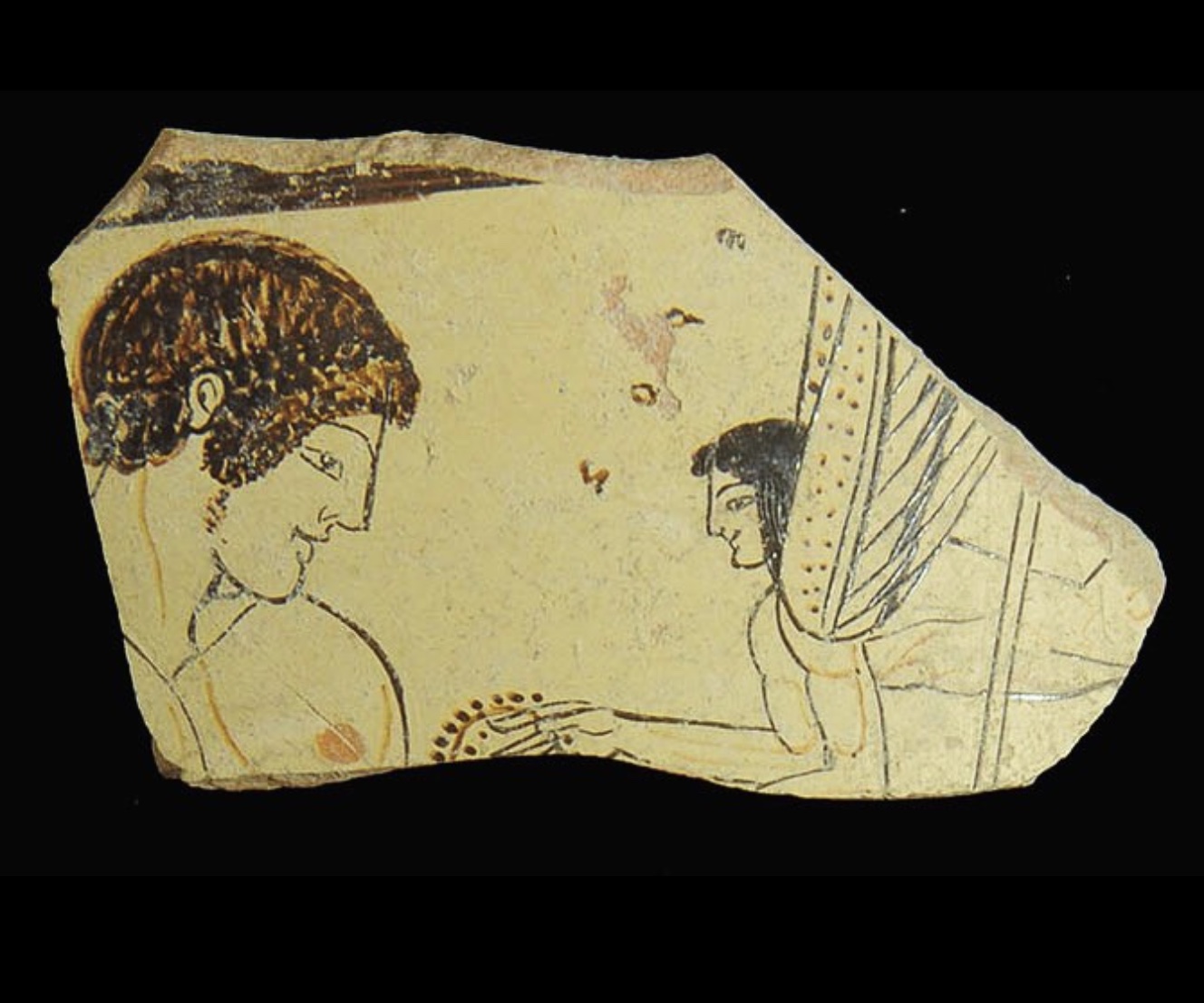As far as fragments go, this one has a lot to say!
It is from near the shoulder of a big white-ground lekythos, produced in Athens around 480 B.C. and attributed to the master painter Douris. Unlike many white ground lekythoi, this one did not have funerary imagery. Rather it shows a beautiful youth, his facial hair just beginning to grow in, smiling coyly as a muscular Eros (labeled by inscription) flies in from the right to crown him with a wreath. What precisely the prize is for is anyone’s guess – perhaps just for being young and beautiful, or perhaps for an athletic accomplishment. Or both.

But the really exciting thing is where it where it was found: not in Athens at all, but within the so-called Megaron (temple R) on the Akropolis of Selinunte (western Sicily) during 2012 excavations led by the indomitable Prof. Clemente Marconi.
It was not, however, a votive deposit, carefully placed at the temple and dedicated to a deity. Rather it was a solitary fragment of the larger vase found topsy-turvy within a thick layer of Hellenistic fill – a mix of rubble and soil brought from elsewhere on the site and used as construction material in the 3rd century B.C. rebuilding of the little temple.
This all is quite interesting! It means the lekythos was exported from Athens to a far-flung Greek colony, presumably used before being discarded or destroyed, and then re-used in this Hellenistic beautification of the city’s main sanctuary.
A jewel of a fragment, with most fascinating excavated, and well-documented context. Neat, eh?




